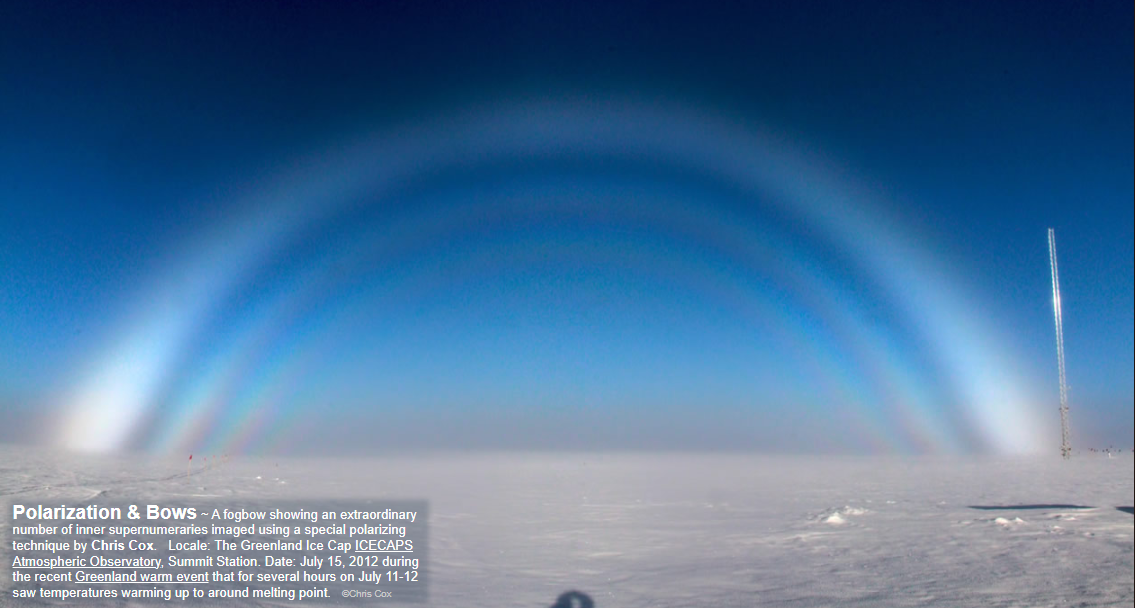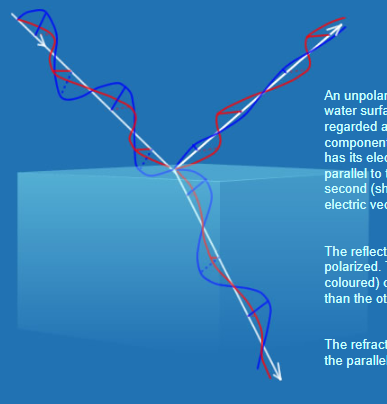OPOD - Bows & Polarization
OPOD - Bows & Polarization: Unveiling the Secrets of Atmospheric Optics
Atmospheric optics never fails to amaze us with its breathtaking displays of natural phenomena. One such captivating spectacle is the formation of bows, including rainbows and fogbows. But did you know that these enchanting optical phenomena are also intricately connected to polarization? In this article, we will delve deeper into the fascinating world of bows and polarization, uncovering the hidden secrets behind these mesmerizing atmospheric displays.
The Intricate Relationship Between Polarization and Bows
When we observe a rainbow or fogbow through a polarizing filter, something extraordinary unfolds before our eyes. Certain parts of the bow become brighter and more contrasted, while other sections seem to fade away. As we rotate the filter, the bright areas gracefully shift along the curve of the bow. This captivating interplay between polarization and bows reveals a deeper connection between these two phenomena.
The Polarization of Light in Bows
To understand the relationship between polarization and bows, we must first explore how light behaves when it encounters water droplets. When unpolarized light strikes water, both reflection and refraction occur. These rays of light become partially polarized, with the waves whose electric vector is parallel to the water's surface being more strongly reflected, while those with an electric vector perpendicular to the surface are more strongly refracted. The degree of polarization depends on the angle of incidence, and at a specific angle known as the Brewster angle, the reflected and refracted beams become 100% polarized.
Unveiling the Polarization of Bows
Both rainbows and fogbows undergo two refractions and an internal reflection within water droplets, resulting in their polarization. At any given point along the bow's curve, the polarization directions are radial and tangential. It is this inherent polarization that enables us to capture stunning images with enhanced clarity, as demonstrated by Chris Cox in his remarkable photograph of a fogbow. By utilizing a polarizing technique, Cox was able to reveal an extraordinary number of inner supernumeraries, creating a visual spectacle that leaves us in awe.
The Enigmatic Supernumeraries and Their Polarization Effects
Supernumeraries, the additional faint bands of color that sometimes appear within bows, exhibit intriguing polarization effects. As we rotate the polarizing filter, these supernumeraries shift in position. When the electric vector of the polarizer aligns tangentially with the bow, the supernumeraries occupy the dark gaps between the fringes observed when the filter is rotated 90 degrees. This shifting of position arises from the interference between two rays that undergo the same deflection angle. However, for one polarization component, one of these rays experiences a phase shift during reflection inside the water droplet, resulting in the captivating phenomenon of supernumeraries.
Exploring the Wonders of Polarization
Polarization opens up a world of possibilities for capturing and understanding atmospheric optics. By utilizing polarizers and their ability to manipulate the direction of polarization, photographers and scientists can unlock hidden details and unravel the complexities of natural phenomena. If you're eager to dive deeper into the fascinating realm of polarization, we recommend exploring Gunther Konnen's book, which provides further insights into this captivating subject.
In Conclusion
The enchanting bows that grace our skies are not only a testament to the beauty of nature but also a captivating interplay between light and polarization. By harnessing the power of polarization, we can unlock hidden details within these atmospheric displays and gain a deeper understanding of their underlying mechanisms. The next time you find yourself gazing at a rainbow or fogbow, take a moment to appreciate the intricate relationship between bows and polarization, and marvel at the wonders of atmospheric optics.

Polarization & Bows ~ A fogbow showing an extraordinary number of inner supernumeraries imaged using a special polarizing technique by Chris Cox. Locale: The Greenland Ice Cap ICECAPS Atmospheric Observatory, Summit Station. Date: July 15, 2012 during the recent Greenland warm event that for several hours on July 11-12 saw temperatures warming up to around melting point. ©Chris Cox

A rainbow or fogbow ray. Partial polarization occurs at the two refractions and at the internal reflection.
View a fogbow or rainbow through a polarizing filter. Part is bright with enhanced contrast while other parts almost disappear. Rotate the filter and the bright areas move along the curve of the bow. Rainbows are strongly polarized, fogbows are less so but still enough to show significant effects.
When unpolarized light strikes water, part is reflected and a part enters the liquid. Both rays are partially polarized. Waves with their electric vector parallel to the surface are more strongly reflected. Waves whose electric vector is perpendicular are more strongly refracted. The degree of their polarization depends on the angle of incidence and at a certain angle, the Brewster angle, the reflected and refracted beams are 100% polarized.
Fogbow and rainbow light has undergone two refractions and an internal reflection and is therefore polarized. At any point the polarization directions are radial and tangential to the bow�s curve.
Chris Cox relied on this polarization to capture unusually clear supernumerary structure. He took three images with the polarizer turned 45� between each and then composited them.
Supernumeraries show peculiar polarization effects. As the filter is rotated they shift in position. When the polarizer's electric vector is tangential to the bow the supernumeraries occupy the position of the dark gaps between the fringes seen when the filter is rotated 90�. The changing position arises because supernumeraries are produced by interference between two rays having the same deflection angle. For one polarisation component, one of these two rays is phase shifted during reflection inside the droplet.
For more about polarization, download Gunther Konnen's book.

An unpolarized ray strikes a water surface. The ray can be regarded as having two components. One (shown red) has its electric vector always parallel to the surface. The second (shown blue) has its electric vector at right angles.
The reflected ray is partially polarized. The parallel (red coloured) component is stronger than the other.
The refracted ray is weaker in the parallel component.
Note: this article has been automatically converted from the old site and may not appear as intended. You can find the original article here.
Reference Atmospheric Optics
If you use any of the definitions, information, or data presented on Atmospheric Optics, please copy the link or reference below to properly credit us as the reference source. Thank you!
-
<a href="https://atoptics.co.uk/blog/opod-bows-polarization/">OPOD - Bows & Polarization</a>
-
"OPOD - Bows & Polarization". Atmospheric Optics. Accessed on April 20, 2024. https://atoptics.co.uk/blog/opod-bows-polarization/.
-
"OPOD - Bows & Polarization". Atmospheric Optics, https://atoptics.co.uk/blog/opod-bows-polarization/. Accessed 20 April, 2024
-
OPOD - Bows & Polarization. Atmospheric Optics. Retrieved from https://atoptics.co.uk/blog/opod-bows-polarization/.